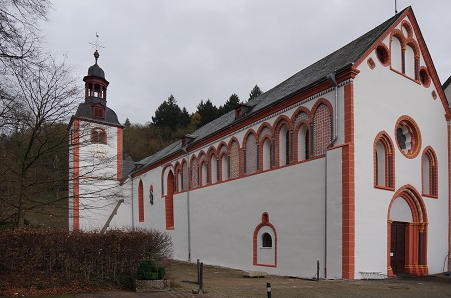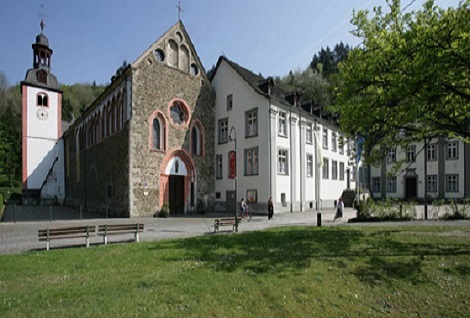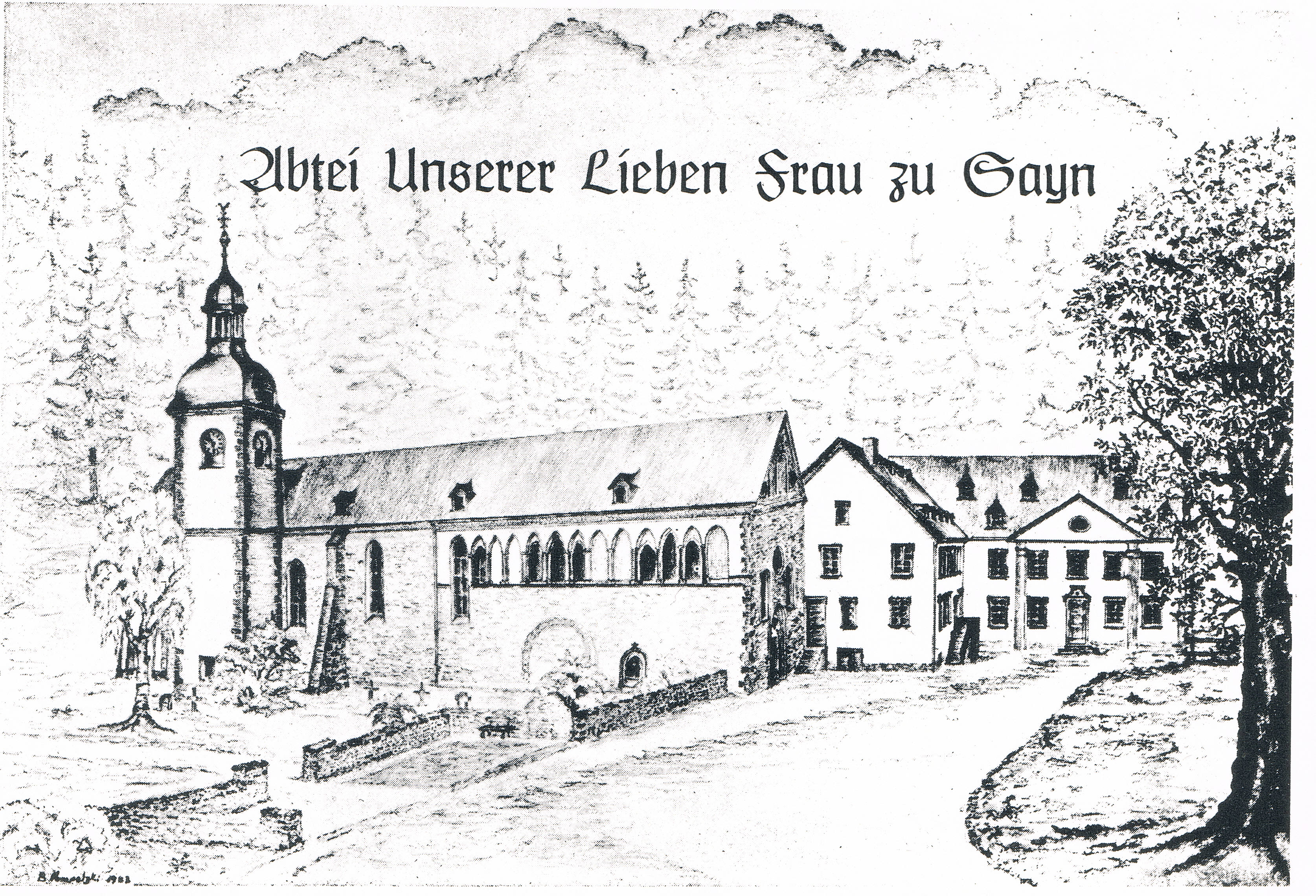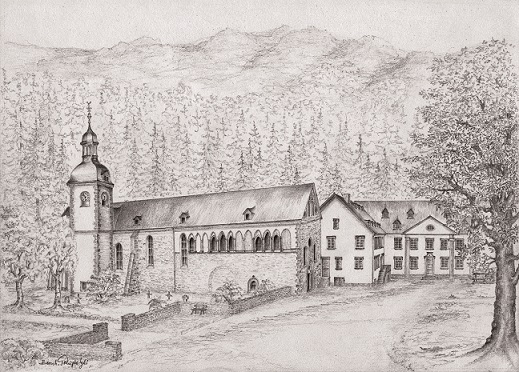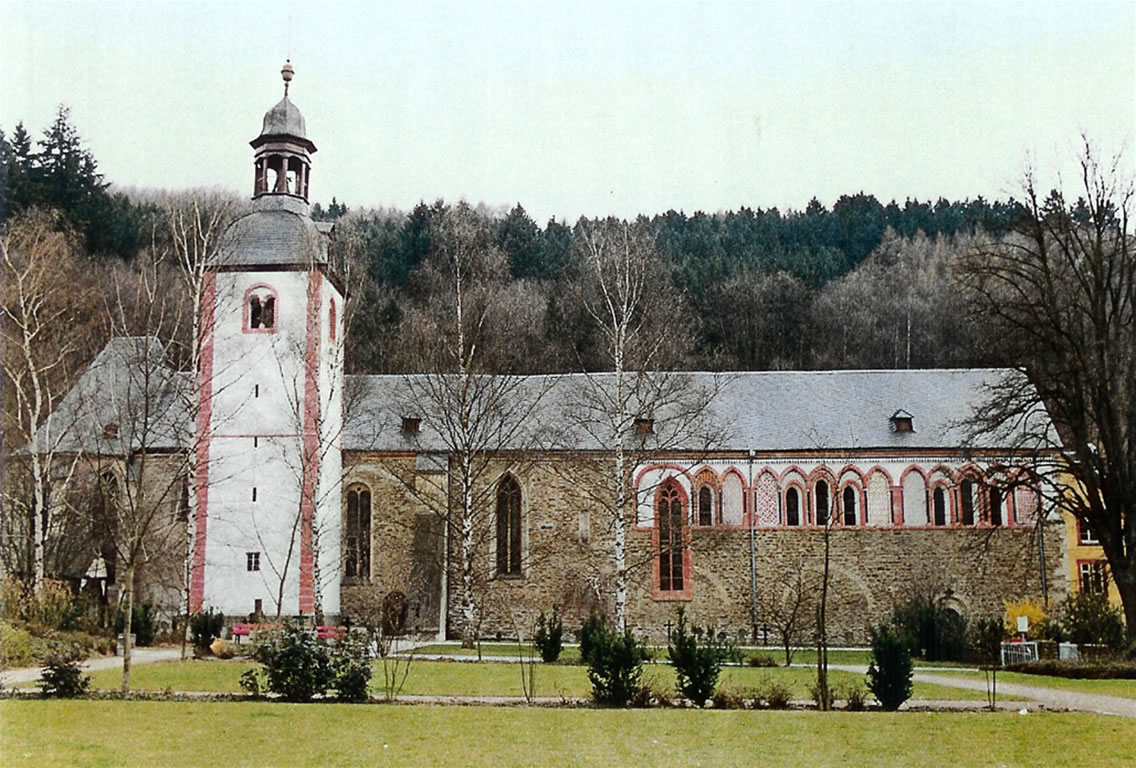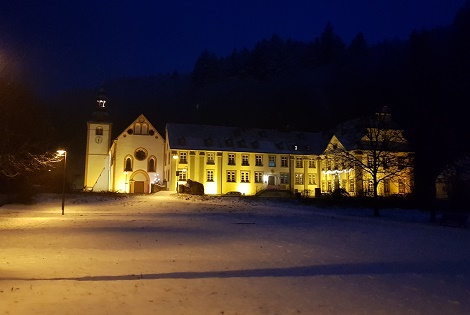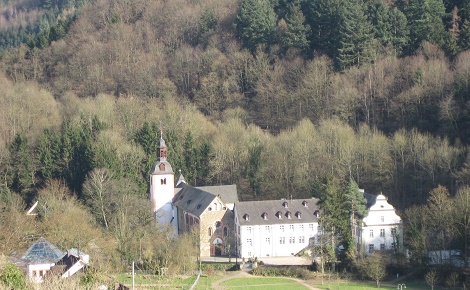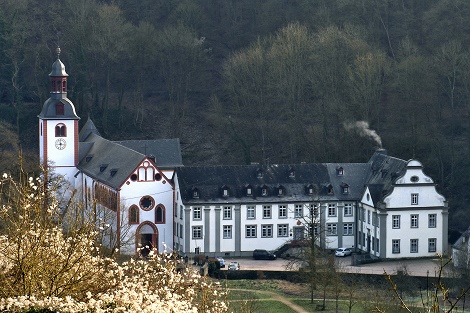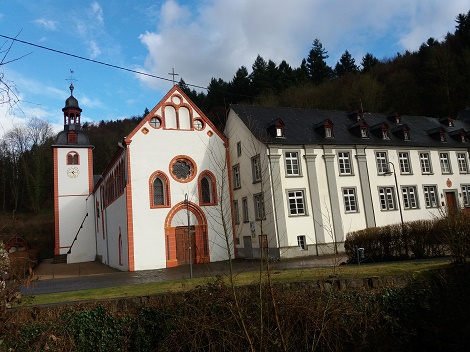Tomb of Earl Heinrich III
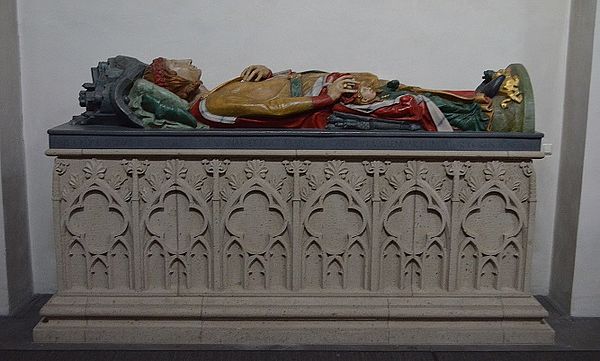
Tomb of Earl Heinrich III
The most significant work of art of the abbey is undoubtedly the larger than life tomb of Earl Heinrich III. (1247), which has been in the Germanic National Museum in Nuremberg since 1920. The replica that you find in Sayn is of significance as it shows the original state of the medieval tomb.
The representation of Earl Heinrich on his tomb stone embodies the figure of a knight from the late Stauf period. The face has very individual characteristics; we may even assume that it was possible to base these on the natural traits of the deceased.
The face as surrounded by a flower wreath and flowing locks portrays a proud beauty. The head rests on a cushion and is also crowned by a portrayal of heavenly Jerusalem. This is surely supposed to represent that the Earl took part in the crusades (1218/19). He is dressed in a garment that reaches down to his feet, which is pleated below the belt, but smooth above the belt. The end of the belt hangs down and has been finely decorated. The coat, the clasp of which is loose, lightly covers the shoulders and left upper arm. The left arm, missing from the original, was no doubt -by way of hooking in the index finger- holding the tassel, the fastening of the coat, as was the necessary custom at court and as is portrayed on the copy in the abbey. It was probably finished before the damage occurred. The speaking gesture of hand and index finger must have been clearly set apart from the breast. On the right hand side of the Earl his small daughter, with him pressing a garland of flowers on her curly hair, is cuddling up to him. At his feet a lion and dragon are cowering, while from up above his long feet hang over them.
From an art history point of view the funerary relief is of great significance. “The subtle carving of the surface and the loving detail make the wood work one of the most significant German tomb figures of the 13th century”.
It is also the first tomb on which a child is portrayed together with its father. Nothing better documents the ability of the artist “than the way in which he carries out the task. One that has a tomb sculptor has never before had to solve, that of connecting the small girl with the huge larger than figure of the father and turning it into a single art work, portraying in the garments not only arms and legs but also another creature that is connected with the father through her gesture and blossom twig , at once hidden by the folds of cloth, but also independently active in it and looking out. As such this was a task that was quite unique in terms of the composition for the sculptor, but also the portrayal of the human aspect in this tomb was something that had never been done before and was not attempted again for much time after.”




